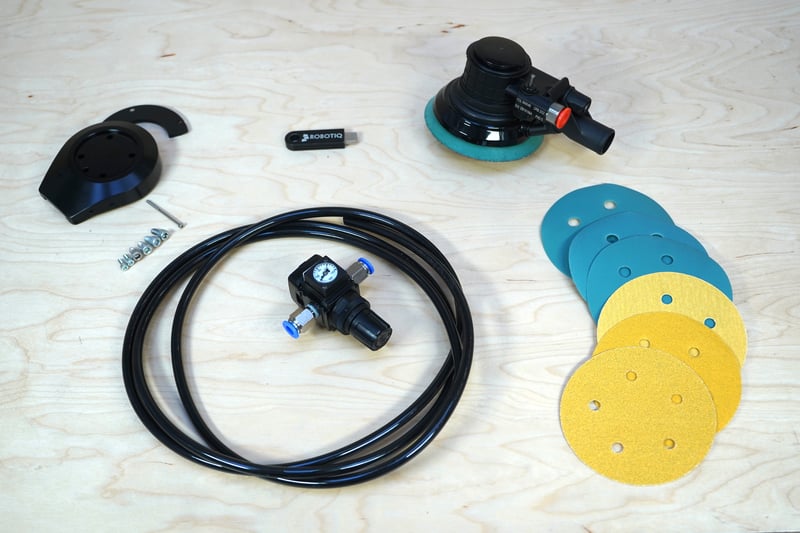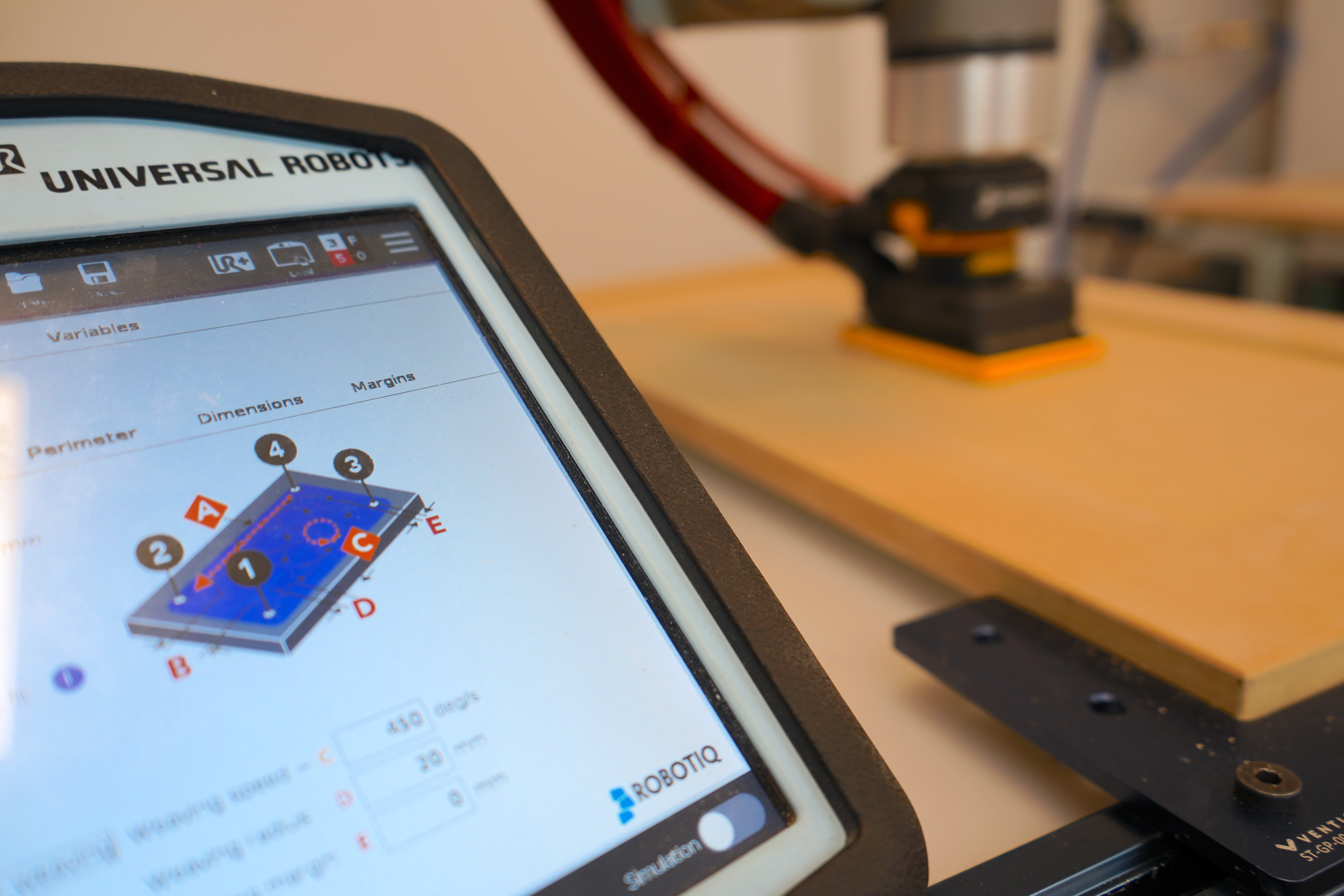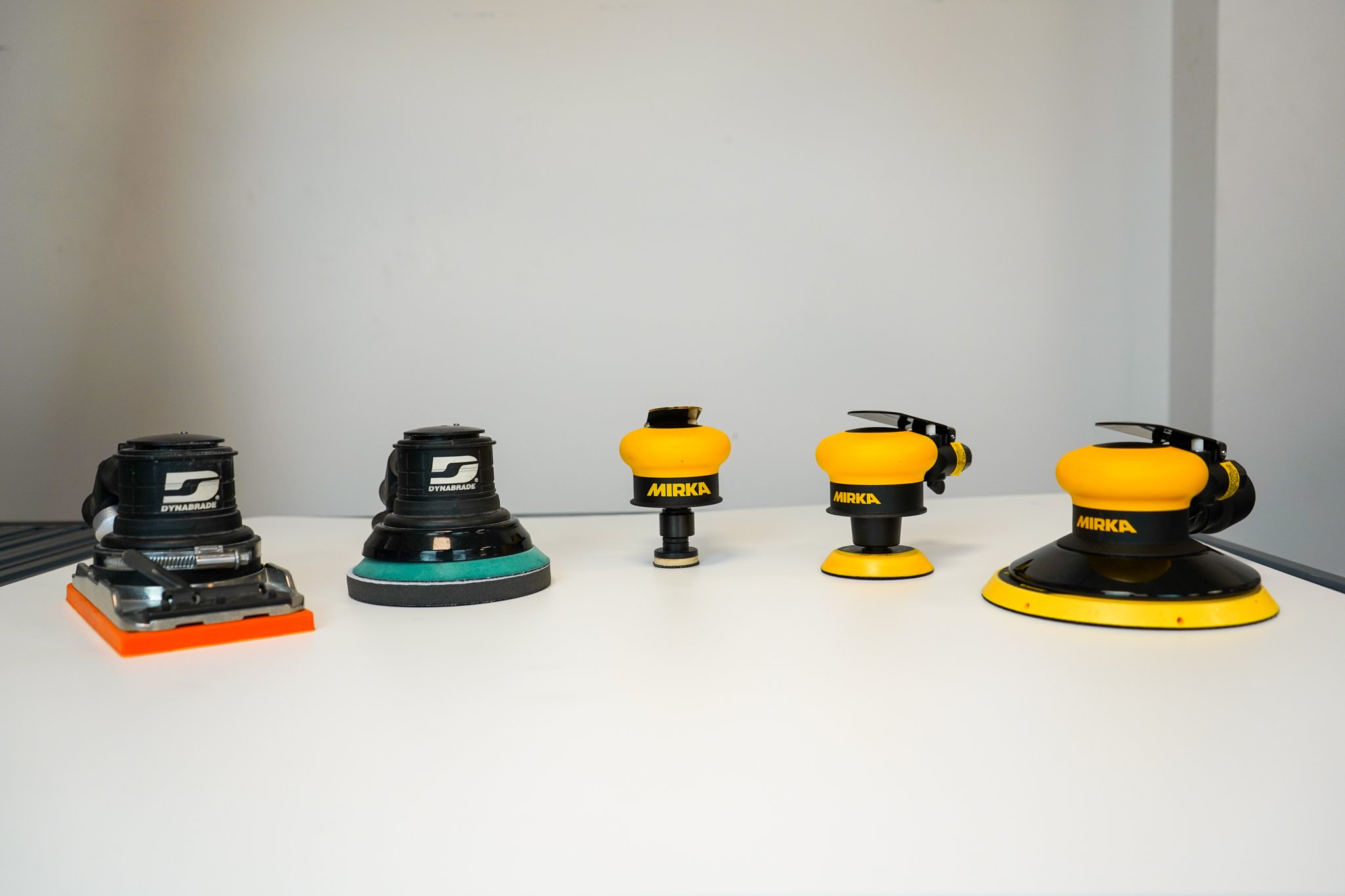How to Pick the Right Abrasive for Robot Sanding

Posted on May 07, 2019 11:13 AM. 6 min read time
What's the best type of abrasive for your robotic sanding application? Your decision will affect both the quality and efficiency of your whole application, so it's important to get it right!
You've got your robot. You've got your sanding end effector. Now, you can go and create flawless autonomously sanded products, right?
Well, almost…
There is one big choice you have to make before you begin using robots for sanding: Which abrasive media will you use? Your decision will affect both the quality and the efficiency of your robotic sanding application.
Here are the three decisions you will have to make to reach the right choice for you.
Choose the right type of abrasive media
The type of abrasive media can significantly affect your task.
Which type is right for your needs? The choice will be affected by the material you are sanding and how much material you need the robot to remove. For example, removing 1 mm of surface varnish is very different from removing 10 mm of wood.
According to Robert McNamee from Norton Abrastives, there are three broad categories of abrasive media: bonded or coated, non-woven, and brushes.
Here are some introductions to all three:
1. Bonded or coated abrasives
These are probably the most common types of abrasive media as they are widely used in industrial manufacturing, joinery, and home-repair. If you have a sanding machine at home, it will almost certainly use bonded or coated abrasives.
Bonded abrasives consist of a mixture of abrasive grains and some type of bonding agent (e.g. resin, epoxy, rubber). This mixture is formed into a shape (usually a wheel) which becomes hard when the bonding agent sets. A common example is grinding wheels.
Coated abrasives are similar to bonded abrasives. However, instead of being formed into a solid shape, the mixture of abrasive grain and bonding agent is coated onto the surface of another material. A common example is sandpaper, where the mixture is applied to paper.
There are many options for coated abrasives which are compatible with robotic sanding.
2. Non-woven abrasives
These sit halfway between sanding and polishing. They are less aggressive than bonded abrasives but are more aggressive than a polishing pad. They are usually made from fibers (often nylon plastic) which are embedded with small particles of abrasive grit.
Non-woven abrasives come in almost as many shapes, sizes, and varieties as coated and bonded abrasives, ranging from hand-pads to belts and disks.
There are several options for non-woven abrasives which are compatible with robotic sanding.
3. Abrasive brushes
These consist of wheels with abrasive bristles. The bristles are either made of metal or they're made from nylon fibers embedded with particles of abrasive grit. One common use of abrasive brushes is for deburring holes.
It is possible to use abrasive brushes with robots. One strategy is for the robot to hold the workpiece and push it into the spinning brush. Another strategy is to use a cup-shaped wheel and attach it to a drill end effector.
Besides these three categories, there are other types of abrasive process such as sandblasting and beadblasting, but these are not very relevant to robotics.
Choose the right grit size
The grit size will determine how aggressively the robot will sand the material. It refers to the average size of the abrasive particles, which can range from about 10 µm to 2 mm.
Larger particles will remove material very quickly, leaving deeper scratches in the material. The usual strategy for sanding is to start with large particles, then gradually move to smaller and smaller particles with each progressive pass of the sander. In this way, each pass removes the scratches from the previous pass.
Bonded and coated abrasives are rated using either ISO "P" designations or CAMI (Coated Abrasive Manufacturers Institute) designations. Both are measures of the size of abrasive particle. Non-woven abrasives are defined by a coarseness description.
Here are the rough grit size ranges for both bonded/coated abrasives and non-woven abrasives, as these are the most relevant types of abrasives for robotic applications:
|
Coarseness and use
|
Coated Abrasive grit size (P / CAMI) |
Non-woven coarseness (and comparable CAMI range) |
Abrasive particle size
|
|
Extra-coarse (very fast material removal) |
P12-P36 / 24 - 36 |
1.8-0.5 mm |
|
|
Coarse (fast material removal) |
P40-P50 / 40-50 |
425-336 µm |
|
|
Medium (preparation for finishing) |
P60-P80 / 60-80 |
Coarse (C) (50-80) |
265-190 µm |
|
Fine (preparation for finishing) |
P100-P120 / 100-120 |
Medium (M) (100-150) |
162-116 µm |
|
Very fine (sanding between coats of finishes) |
P150-P360 / 150-240 |
Fine (F) (180-220) |
100-40.5 µm |
|
Extra fine (starting polishing) |
P400-P600 / 320-360 |
Very Fine (VF) (240-360) |
36.0-25.8 µm |
|
Super fine (final sanding of finishes) |
P800-P1200 / 400-600 |
Ultra Fine (UF) (600) |
23.0-15.3 µm |
|
Ultra fine (final sanding and polishing of thick finishes) |
P1500-P2500 / 800-1000 |
Micro Fine (MF) (1000-1200) |
12.6-8.4 µm |
Ensure compatibility with your robot
Finally, you will need to ensure that your chosen media and grit size are compatible with your robot. Only some of the many options will be compatible.
The first step is to find an end-effector for the robot which can be used for sanding tasks, such as our Sanding Kit. This attaches to the end of the robot arm and provides the software necessary to program sanding tasks.
 The Robotiq Sanding Kit is the only hardware & software solutions for Universal Robots
The Robotiq Sanding Kit is the only hardware & software solutions for Universal Robots
Then, you will need to find an abrasive media which has an attachment method that is supported by that end effector.
There are various attachment methods but the 3 most common are:
- Hook-and-loop — These are very common and are easy to attach and detach.
- Pressure Sensitive Adhesive (PSA) — These attach firmly to the sander when you apply pressure, but can be tricky to remove.
- Drill bit attachment — Some abrasive media is attached to a shaft which needs to be tightened into a chuck.
For example, the Robotiq Sanding Kit is compatible with 5" circular hook-and-loop backed abrasive media. This is a very common type which means that there are many options available for it.
To find the right abrasive for your end effector, you can start by searching for it online. For example, to you could search for: 5 inch hook and loop 50 grit non-woven abrasive disc.
Then, all you need to do is program your robot and you're ready to go!
How could you use robotic sanding in your business? Tell us in the comments below or join the discussion on LinkedIn, Twitter, Facebook or the DoF professional robotics community.






Leave a comment